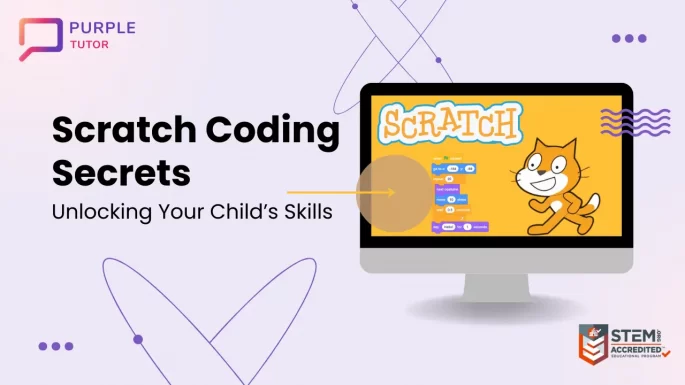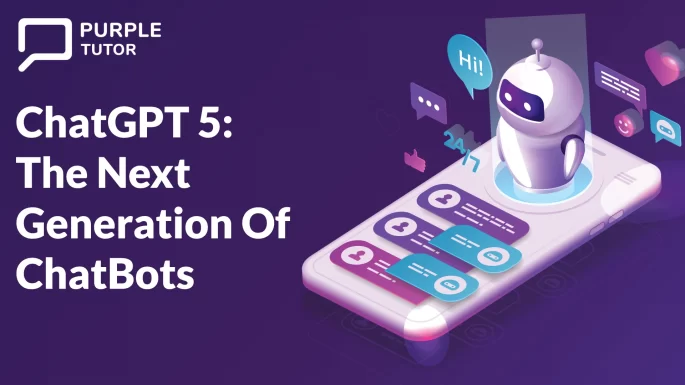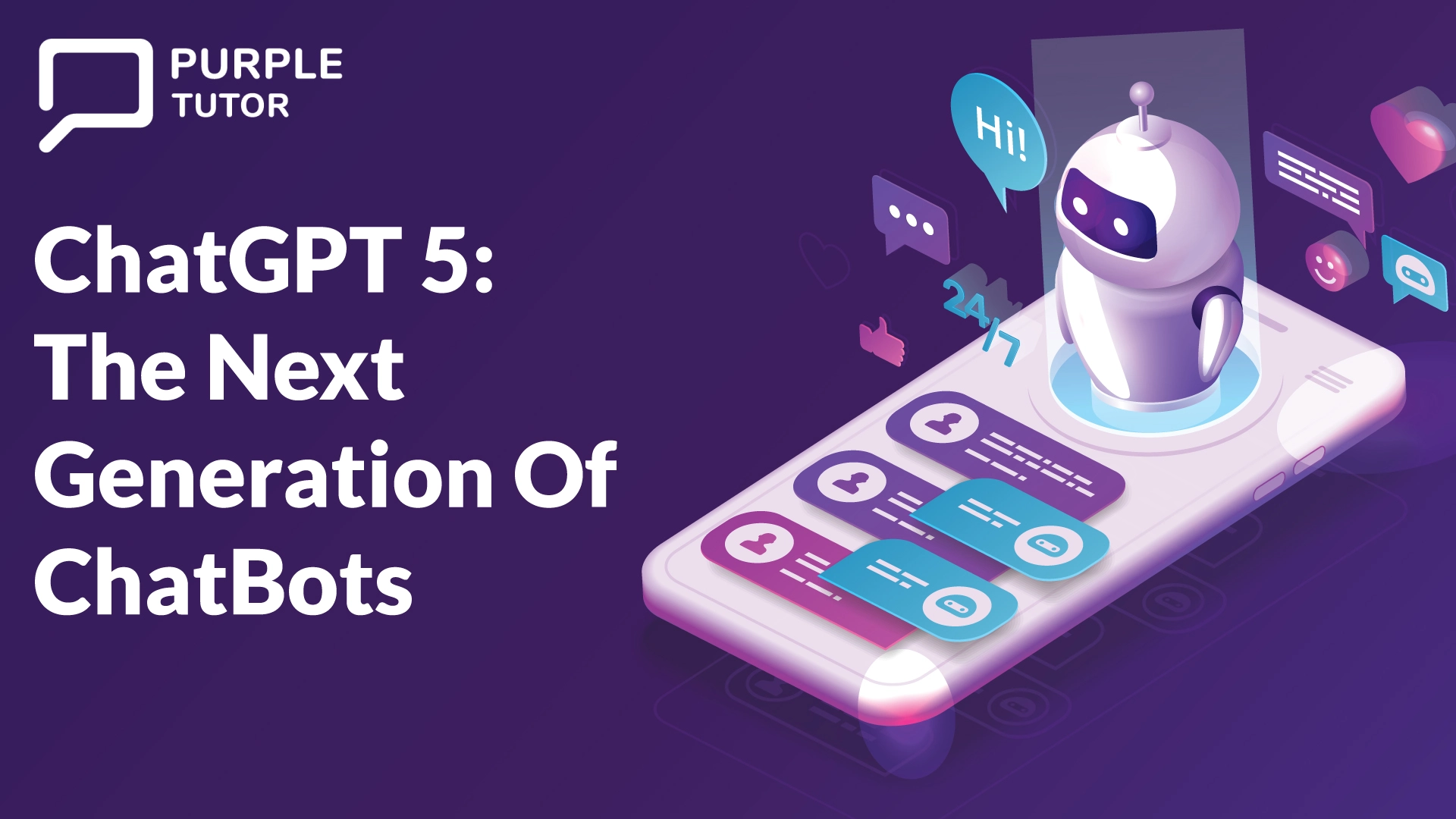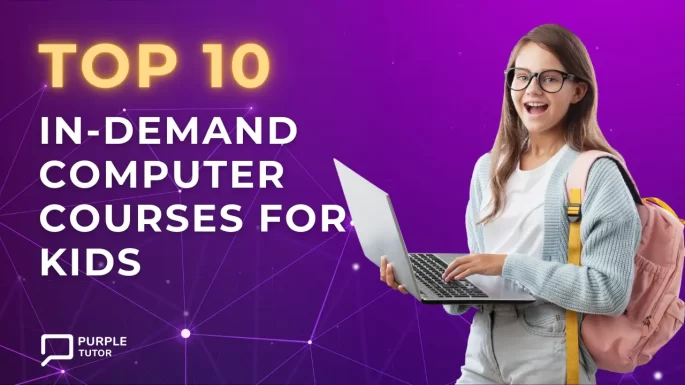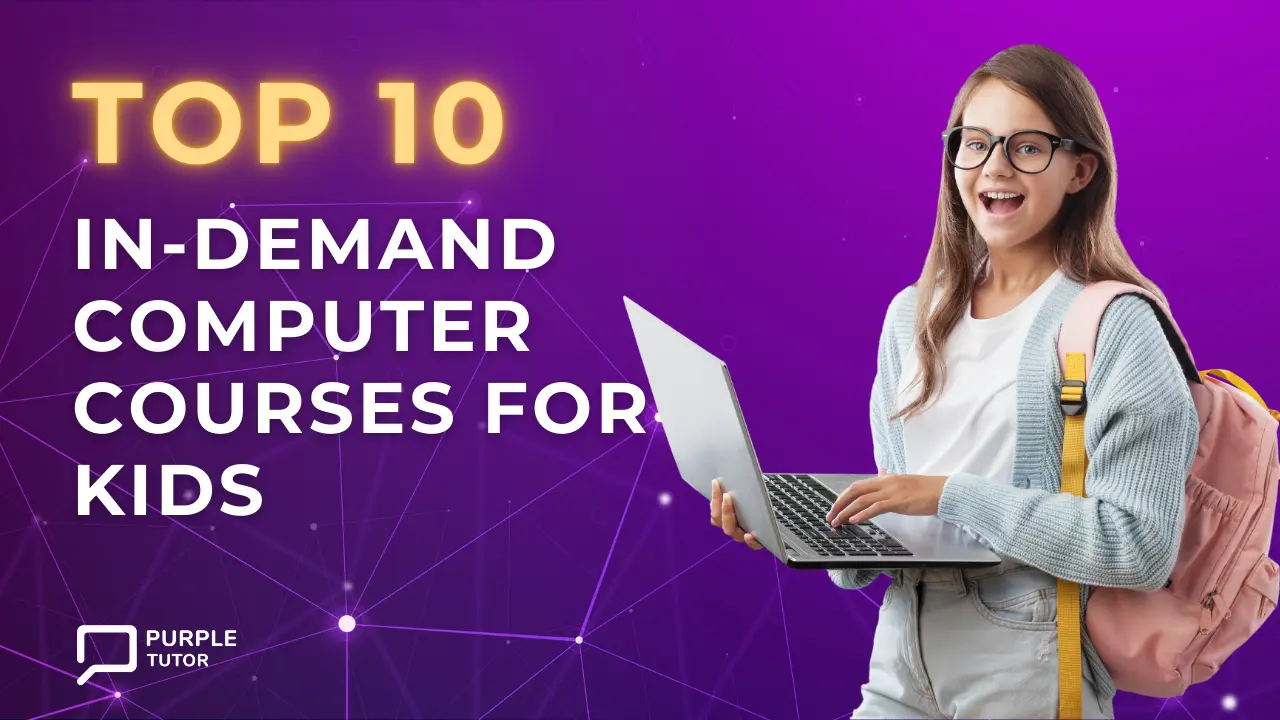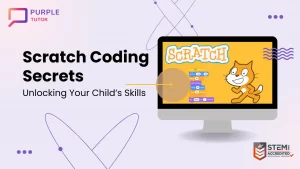 Scratch coding is the gateway to nurturing your child’s creativity and problem-solving abilities in an increasingly digital world. In the rapidly evolving digital landscape, preparing your child with essential skills is paramount. One such skill is coding, and Scratch coding emerges as a fantastic platform to introduce your child to this world. In this comprehensive guide, we will delve into the world of Scratch coding secrets, exploring its significance for children aged 6-18 and their parents. Additionally, we’ll touch upon the benefits of live classes and how PurpleTutor can be your child’s ultimate coding companion.
Scratch coding is the gateway to nurturing your child’s creativity and problem-solving abilities in an increasingly digital world. In the rapidly evolving digital landscape, preparing your child with essential skills is paramount. One such skill is coding, and Scratch coding emerges as a fantastic platform to introduce your child to this world. In this comprehensive guide, we will delve into the world of Scratch coding secrets, exploring its significance for children aged 6-18 and their parents. Additionally, we’ll touch upon the benefits of live classes and how PurpleTutor can be your child’s ultimate coding companion.
Understanding the World of Scratch Coding
What is Scratch Coding?
Scratch coding is a fun and innovative way for children to learn the fundamentals of programming. It’s a visual programming language that uses a drag-and-drop interface, allowing kids to create interactive stories, games, and animations. Unlike traditional coding, Scratch’s user-friendly approach removes the complexity of coding syntax, making it perfect for beginners.
The Benefits of Scratch Programming
1. Engagement and Creativity: Scratch empowers children to express their creativity through coding. They can bring their ideas to life by combining colorful code blocks, fostering a sense of accomplishment and pride.
2. Problem Solving: Scratch programming promotes logical thinking and problem-solving skills. Children learn how to break down complex tasks into smaller, manageable steps.
3. Collaboration: Scratch encourages collaboration as kids can share their projects with others. This enhances their communication and teamwork abilities.
4. Confidence Building: As children see their projects come to life, they gain confidence in their abilities, setting the stage for future successes.
Why Learn Python from Scratch?
As children progress in their coding journey, it’s natural to explore more advanced programming languages like Python. Learning Python from scratch is the next logical step. Python is known for its readability and versatility, making it an excellent choice for young learners.
Python from Scratch: Building Strong Foundations
Learning Python from scratch doesn’t mean starting from square one all over again. Instead, it signifies building upon the foundation laid by Scratch coding. Python introduces more complex coding concepts while maintaining a syntax that’s accessible to beginners. This transition equips children with a versatile language used in various industries, from web development to data science.
The Role of Scratch Education
Why Choose Scratch Education?
Scratch education offers a structured approach to learning coding skills. It’s not just about coding; it’s about holistic child development. Here’s why Scratch education is beneficial:
1. Structured Learning: Scratch education provides a curriculum that guides children through their coding journey, ensuring they cover essential concepts step by step.
2. Real-World Skills: Beyond coding, children develop valuable skills such as problem-solving, critical thinking, and creativity, which are applicable in many aspects of life.
3 Community and Support: Scratch education often involves a supportive community of educators and parents who can share resources and ideas to enhance the learning experience.
The Benefits of Live Scratch Coding Classes
To fully unlock your child’s coding potential, consider enrolling them in live coding classes. These interactive sessions offer several advantages:
1. Personalized Guidance: Live classes provide one-on-one interaction with experienced instructors who can address your child’s specific needs and challenges.
2. Real-Time Feedback: In live sessions, children receive immediate feedback on their projects, helping them improve and refine their coding skills.
3. Peer Interaction: Live classes facilitate peer interaction, allowing children to collaborate, share ideas, and even work on exciting group projects. This social aspect of learning is invaluable.
4. Age-Appropriate Learning: Live classes are often structured to cater to different age groups, ensuring that the content is suitable and engaging for your child’s specific age and skill level.
How PurpleTutor Can Help?
PurpleTutor offers live coding classes specifically tailored to children aged 6-18. Our experienced instructors provide a supportive learning environment where your child can explore Scratch coding and Python from scratch. Here’s how PurpleTutor can benefit your child:
1. Expert Guidance: Our instructors are skilled in simplifying complex coding concepts, making them easily understandable for kids.
2. Interactive Learning: Live classes offer real-time interaction with instructors and peers, enhancing the learning experience.
3. Structured Curriculum: PurpleTutor’s curriculum is designed to gradually introduce coding concepts, starting with Scratch and progressing to Python.
4. Fun and Engaging: We understand that learning should be fun. PurpleTutor’s classes are interactive and filled with exciting projects that keep kids motivated.
5. Parent Involvement: We encourage parents to be actively involved in their child’s learning journey. You can monitor progress and support your child’s coding adventures.
Conclusion
Scratch coding is a powerful tool for unlocking your child’s potential in the digital age. Starting with Scratch and transitioning to Python can provide a strong foundation for future success. With the help of PurpleTutor’s live classes, your child can embark on this exciting coding journey with confidence and enthusiasm. Don’t wait; let’s start coding from scratch today!
Frequently Asked Questions (FAQs)
1. Is there a free trial class available?
– A: Yes, we offer a complimentary demo class which you can schedule using the provided link. Take advantage of this opportunity to experience our teaching approach firsthand.
2. Can I choose my preferred class schedule?
– A: Absolutely! Our scheduling is flexible, allowing you to select the day and time that suits your availability and preferences.
3. Will I receive a certificate upon completing the online Python course?
– A: Yes, upon successful completion of the coding course, you’ll receive a certificate to recognize your achievement.
4. What are the prerequisites for enrolling in PurpleTutor’s coding courses?
– A: To enroll in our Python courses, you’ll need a laptop or computer with a webcam and a stable internet connection. While most of our courses don’t have specific coding prerequisites, having a basic understanding of core Python programming concepts is helpful for Data Science coding courses.
5. Do the coding courses involve assessments?
– A: Certainly, we conduct regular assessments and provide feedback on your performance throughout the coding classes. Our aim is to track your progress and offer valuable guidance to enhance your learning journey.
6. What courses does PurpleTutor offer?
– A: PurpleTutor provides a diverse range of advanced courses designed to prepare students for the future. Our Python course catalog includes Python programming, Web Development, Machine Learning, Artificial Intelligence, Cybersecurity, Roblox Game Development, and more.
We also offer comprehensive math courses. Explore our full course selection in the dedicated courses section or schedule a free class to experience our teaching and discuss various course options with our instructors.
